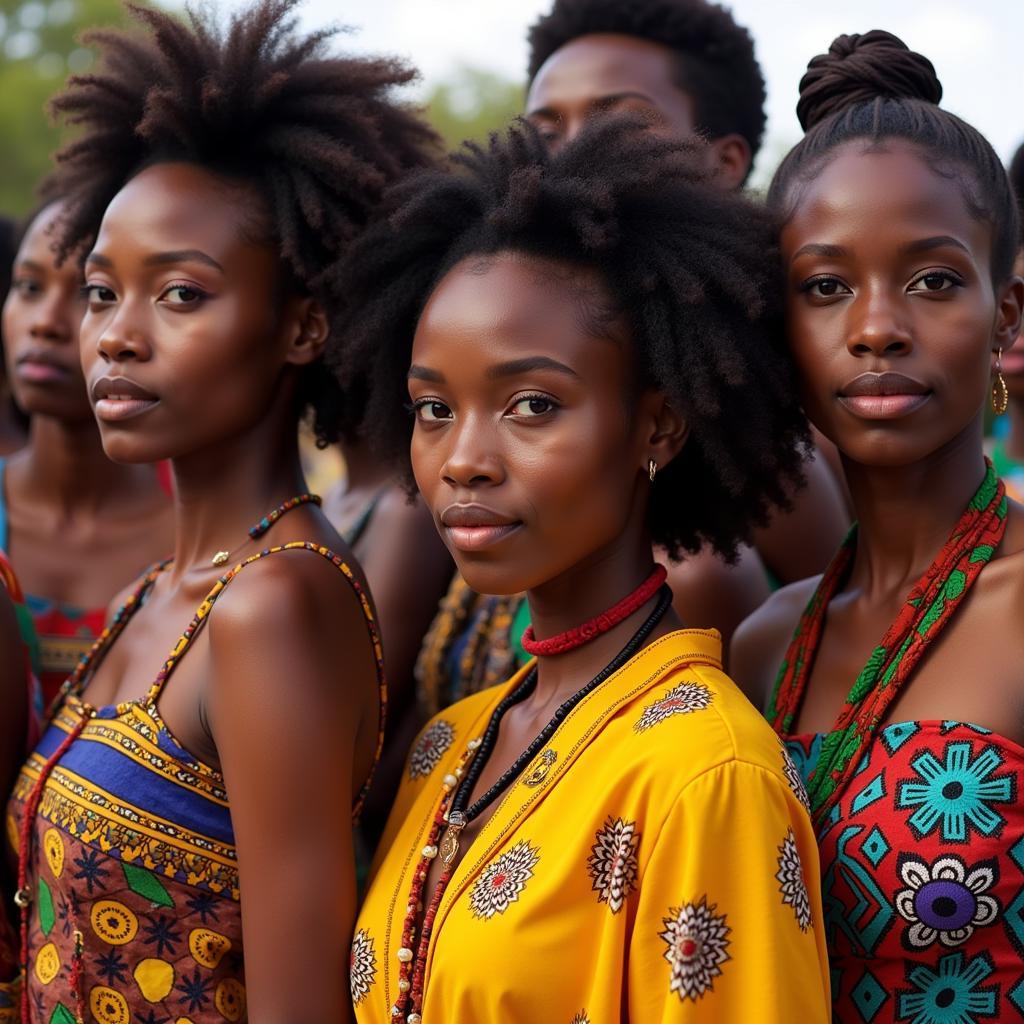The Okapi: Africa’s Giraffe-Related Mystery
The okapi, an elusive forest dweller, is the only living relative of the giraffe. This unique African animal, related to the giraffe, often surprises people with its zebra-striped legs and long neck, leading many to question its true lineage. This article delves into the fascinating world of the okapi, exploring its evolutionary history, physical characteristics, habitat, and the conservation efforts in place to protect this remarkable creature.
Unraveling the Okapi’s Relationship to Giraffes
The okapi and the giraffe share a common ancestor, placing them in the same family, Giraffidae. While the giraffe evolved to graze on high treetops, the okapi adapted to a life in the dense rainforests of Central Africa, primarily the Democratic Republic of Congo. This divergence in habitat led to distinct evolutionary paths, resulting in the physical differences we see today. However, key features, like their long necks and similar skeletal structure, undeniably link them. They also share a specialized long, prehensile tongue, perfect for stripping leaves from branches. In fact, early explorers even referred to the okapi as the “forest giraffe.”
The okapi’s elusive nature contributes to its mystique. Living in dense foliage, they are notoriously difficult to spot in the wild, making them a subject of fascination and ongoing research. Their solitary habits and shy disposition further contribute to the limited knowledge about their behavior in the wild.
Physical Characteristics and Habitat: A Closer Look
The okapi’s distinctive markings, with zebra-striped legs and a reddish-brown body, provide excellent camouflage in the dappled light of the rainforest understory. This, combined with their keen sense of hearing and smell, makes them well-equipped to evade predators like leopards. Their large, rounded ears allow them to pinpoint the location of potential threats, and their prehensile tongue, reaching up to 18 inches, allows them to efficiently browse on leaves, fruits, and fungi. Imagine having a tongue that long!
Conservation Challenges and Efforts
The okapi faces significant threats, primarily due to habitat loss from deforestation and poaching for their meat and skin. Civil unrest in the Democratic Republic of Congo further exacerbates these challenges, making conservation efforts difficult. However, organizations like the Okapi Conservation Project are working tirelessly to protect the okapi and its rainforest home through community-based conservation initiatives, anti-poaching patrols, and research programs. Learn more about other amazing animals by exploring our guide to African big game.
Conclusion: Ensuring the Okapi’s Future
The okapi, a unique African animal related to the giraffe, remains a symbol of the biodiversity and wonder of the Congo Basin rainforest. Understanding its connection to the giraffe, as well as the challenges it faces, is crucial for ensuring its survival for future generations. Continued conservation efforts are essential to safeguarding this remarkable creature and its delicate ecosystem. For more insights into African wildlife, explore our resources on African animal footprints. You might also be interested in African Explorer Safari for an incredible adventure.
FAQ
- What is the closest living relative of the okapi? The giraffe.
- Where do okapis live? Primarily in the dense rainforests of the Democratic Republic of Congo.
- What do okapis eat? Leaves, fruits, fungi, and other vegetation.
- Why are okapis endangered? Habitat loss, poaching, and civil unrest.
- How can I help protect okapis? Support conservation organizations like the Okapi Conservation Project.
- What are the distinctive features of an okapi? Zebra-striped legs, reddish-brown body, long neck, and prehensile tongue.
- Are okapis related to zebras? No, they are related to giraffes. The stripes are a form of camouflage. Need a hint for a 5-letter African animal? Check out African animal crossword clue 5 letters.
Discover the unique and delicious South African fruit to learn more about the continent’s diverse offerings.
Common Questions
What is the okapi’s lifespan? Okapis typically live for 20-30 years in the wild.
How do okapis communicate? They use a variety of vocalizations, including whistles, clicks, and low-frequency calls.
Further Exploration
Want to learn more about African animals? Check out other articles on our website!
When you need assistance, please contact us: Phone: +255768904061, Email: kaka.mag@gmail.com, or visit us at: Mbarali DC Mawindi, Kangaga, Tanzania. We have a 24/7 customer service team.


